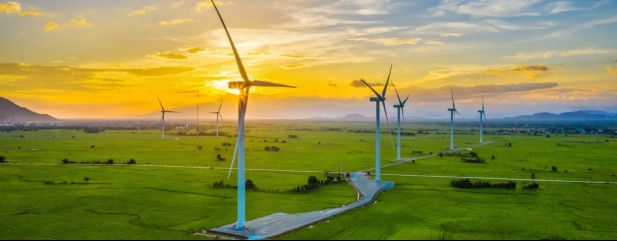Archived article
Please note that tax, investment, pension and ISA rules can change and the information and any views contained in this article may now be inaccurate.
The potential for a green advancement in emerging markets

AJ Bell is an easy to use, award-winning platform Open an account
We've accounts to suit every investing need, and free guides and special offers to help you get the most from them.
You can get a few handy suggestions, or even get our experts to do the hard work for you – by picking one of our simple investment ideas.
All the resources you need to choose your shares, from market data to the latest investment news and analysis.
Funds offer an easier way to build your portfolio – we’ve got everything you need to choose the right one.
Starting to save for a pension, approaching retirement, or after an explainer on pension jargon? We can help.
Please note that tax, investment, pension and ISA rules can change and the information and any views contained in this article may now be inaccurate.

Investors often associate emerging markets with a reliance on fossil fuels like coal, which would suggest that tackling climate change is not going to be easy.
As the middle class population in emerging markets grows and factors like car ownership and consumption of meat go up, so emissions are expected to increase.
Research published in April 2021 by the International Finance Corporation, a sister organisation of the World Bank, reported that emerging markets account for 62% of the world’s population and 48% of global emissions.
If emissions were to grow to match emerging markets’ share of the global population, this could have damaging consequences for the environment.
However, more optimistically, the same report also highlighted the potential for a green recovery from the Covid-19 pandemic over the next decade. It stated: ‘As countries shift from short-term pandemic relief measures towards long-term economic recovery, governments face important decisions about the type of economies they want to rebuild and how to allocate limited resources effectively.’
In partnership with market research firm Guidehouse Insights the IFC identified over the next 10 years $10.2 trillion in investment opportunities, 213.4 million cumulative new direct jobs and 4 billion tonnes of carbon dioxide equivalent reduction in greenhouse gas emissions across 21 major emerging market economies.
Half of these investment opportunities are centred around East Asia and the Pacific, encompassing China, Indonesia, Philippines and Vietnam.
This outlook is part of a series being sponsored by Templeton Emerging Markets Investment Trust. For more information on the trust, visit here.
These articles are provided by Shares magazine which is published by AJ Bell Media, a part of AJ Bell. Shares is not written by AJ Bell.
Shares is provided for your general information and use and is not a personal recommendation to invest. It is not intended to be relied upon by you in making or not making any investment decisions. The investments referred to in these articles will not be suitable for all investors. If in doubt please seek appropriate independent financial advice.
Investors acting on the information in these articles do so at their own risk and AJ Bell Media and its staff do not accept liability for losses suffered by investors as a result of their investment decisions.
The value of your investments can go down as well as up and you may get back less than you originally invested. We don't offer advice, so it's important you understand the risks, if you're unsure please consult a suitably qualified financial adviser. Tax treatment depends on your individual circumstances and rules may change. Past performance is not a guide to future performance and some investments need to be held for the long term.
 magazine
magazine